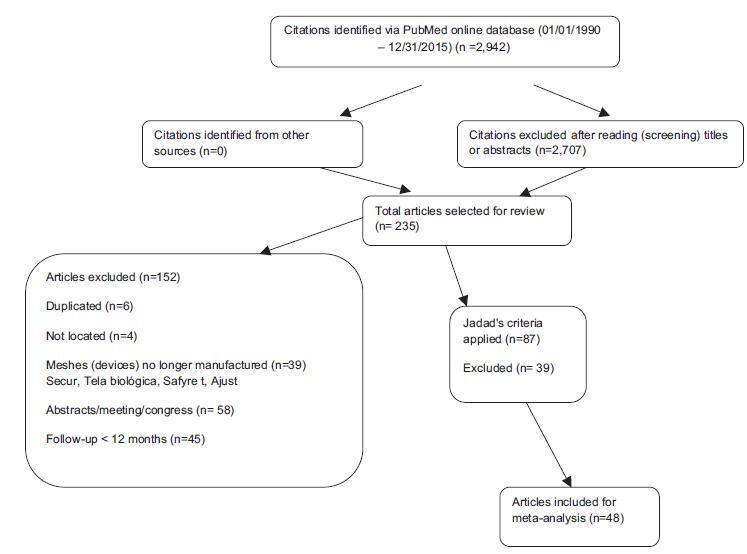-
Trabalhos Originais
The use of bovine pericardium in the pubovaginal sling for the treatment of stress urinary incontinence
Revista Brasileira de Ginecologia e Obstetrícia. 2003;25(7):525-528
11-04-2003
Summary
Trabalhos OriginaisThe use of bovine pericardium in the pubovaginal sling for the treatment of stress urinary incontinence
Revista Brasileira de Ginecologia e Obstetrícia. 2003;25(7):525-528
11-04-2003DOI 10.1590/S0100-72032003000700010
Views98See morePURPOSE: to evaluate the results of the use of bovine pericardium in the pubovaginal sling procedure for treatment of stress urinary incontinence. METHODS: a prospective analysis of five patients who underwent pubovaginal sling with the use of bovine pericardium strip for stress urinary incontinence in the "Hospital das Clínicas of UFMG" from October/2001 to December/2001. The mean age was 48.2±11.5 years (33 to 69 years). RESULTS: the mean surgical time was 45±35.3 min and the mean hospital stay was 36±12.4 h (24 to 48 h). Complications in the periperative or immediate postoperative period did not occur. All patients initially presented satisfactory results with normal voiding and without stress incontinence. Postoperative complications occurred in the 5 patients (100%), with dehiscence of the vaginal wound and total expulsion of the strip in 2 patients (40%) and partial expulsion in 3 patients (60%). All patients presented stress urinary incontinence and were submitted to a new sling procedure using the rectus fascia. The patients then progressed without complications and with improvement of urinary continence in 4 patients (80%). CONCLUSIONS: pubovaginal sling with the use of bovine pericardium was associated with high rates of complications. Therefore, its use is not recommended in the treatment of stress urinary incontinence.



